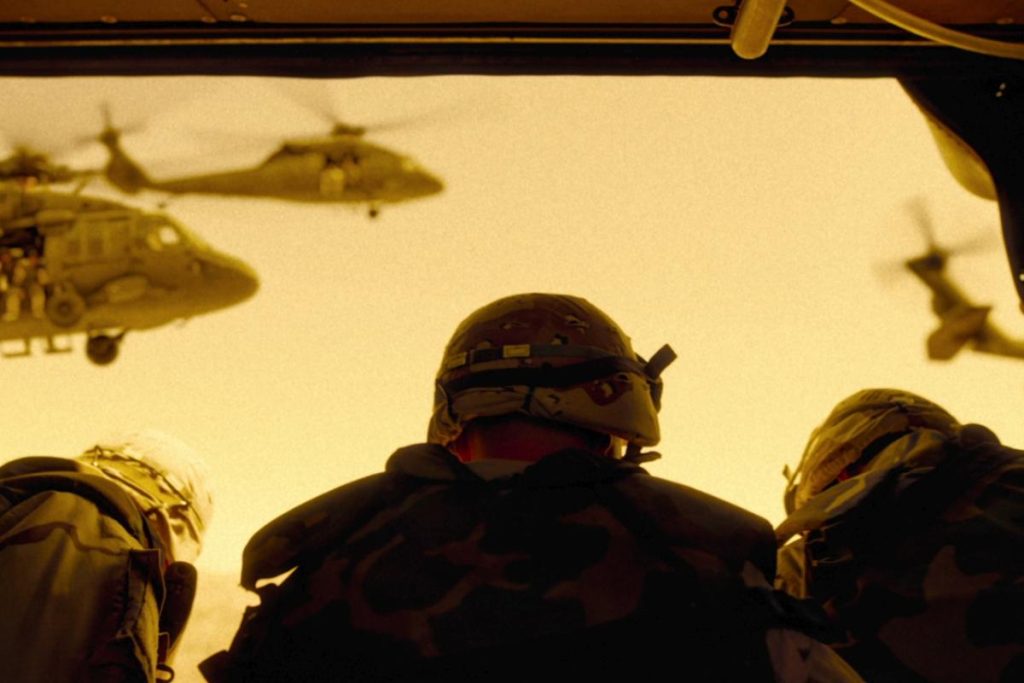The docuseries Surviving Black Hawk Down, directed by Jack MacInnes and produced by Ridley Scott Associates, offers a gripping and deeply personal exploration of the infamous 1993 Battle of Mogadishu, more commonly known in the U.S. as the “Black Hawk Down incident.” The series brings together interviews with U.S. Army Rangers, Delta Force soldiers, and Somali fighters who were directly involved in the battle, providing a nuanced and balanced perspective on one of the most harrowing military engagements in modern American history. The battle, which resulted in the deaths of 18 American soldiers and hundreds of Somalis, marked one of the worst losses for the U.S. military since the Vietnam War. It also served as the inspiration for Ridley Scott’s 2001 film Black Hawk Down, but the docuseries goes far beyond the Hollywood adaptation, delving into the complexities of the conflict and its broader implications.
The series begins with a haunting opening scene: a man named Dave sits in a neon-lit diner, reflecting on the events of October 3, 1993. The director’s voiceover asks Dave to recount his experiences, and the simplicity of the setup belies the intensity of the story that follows. Surviving Black Hawk Down is structured into three episodes, each of which examines a different aspect of the battle and its aftermath. The first episode focuses on the lead-up to the mission and the initial stages of the battle, including the downing of three Black Hawk helicopters by Somali fighters. The subsequent episodes explore the chaotic and deadly aftermath, including the failed rescue attempts and the media firestorm that followed the mission’s failure. Throughout the series, MacInnes interweaves interviews with archival footage and well-crafted reenactments, immersing viewers in the chaos and confusion of the battle.
One of the most compelling aspects of Surviving Black Hawk Down is its commitment to presenting multiple perspectives. While the U.S. military personnel share their stories of heroism, sacrifice, and survival, the series also gives a platform to Somali fighters who fought against the American forces. These interviews provide a fascinating counterpoint to the American narrative, revealing how the Somali population viewed the U.S. intervention as an unwelcome occupation rather than a humanitarian mission. The series explains that the initial U.S. involvement in Somalia was part of a U.N. peacekeeping effort aimed at addressing the country’s devastating famine, but the mission shifted in mid-1993 to focus on capturing General Mohammed Farah Aidid, the leader of the Somali National Alliance. This shift in objectives alienated many Somalis, who began to rally behind Aidid in response to U.S. airstrikes that killed civilians. The Somali fighters, though lacking the advanced training and weaponry of the American military, were able to mount a fierce resistance, fueled by their determination to protect their homeland.
The interviews with the U.S. soldiers are equally insightful, offering a glimpse into the mindset of the young Army Rangers and Delta Force operatives who were tasked with carrying out the mission. Many of these soldiers were in their early 20s, full of confidence and a sense of invincibility that would later be shattered by the ferocity of the Somali resistance. The series highlights the bravery and skill of these men, but it also underscores the hubris and overconfidence that may have contributed to the mission’s failure. The soldiers’ accounts are both poignant and reflective, as they grapple with the lessons of the battle and its enduring impact on their lives. For many, the experience remains a defining moment, one that continues to shape their views on war, leadership, and the complexities of modern conflict.
The docuseries also raises important questions about the broader implications of the Battle of Mogadishu, particularly in terms of its impact on U.S. foreign policy. The failure of the mission led to a reevaluation of American involvement in international conflicts, with some arguing that it contributed to the U.S. reluctance to intervene in subsequent crises, such as the 1994 genocide in Rwanda. The series hints at these larger themes but leaves room for viewers to draw their own conclusions. Additionally, the inclusion of Somali perspectives challenges the simplistic narrative of the battle as a clash between good and evil, instead presenting it as a multifaceted conflict driven by political, cultural, and economic factors.
In the end, Surviving Black Hawk Down is a powerful and thought-provoking docuseries that succeeds in humanizing the participants on both sides of the conflict. It avoids sensationalism, instead opting for a measured and respectful approach that honors the experiences of all those involved. The series is a must-watch for anyone interested in military history, international relations, or the complexities of modern warfare. By shedding light on a pivotal moment in recent history, Surviving Black Hawk Down reminds us of the enduring consequences of conflict and the importance of understanding the perspectives of all those affected.
